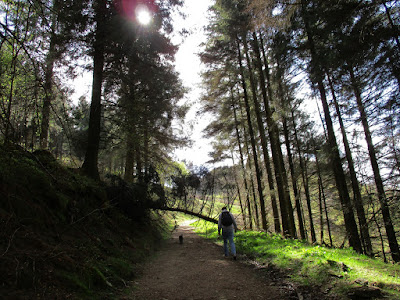Jill's Way Up North these days, and I don't get days off very often anymore, so I contented myself with a strategic hour in a favourite place I hadn't visited in ages.
I had a secondary motive. Thomas Chatterton's been hanging about in my head lately. I've been meaning to write something about him for years. Maybe it's time.
 You can see his house from the north side of the Church, though it's been moved since he was born there, to accommodate the horribly close dual carriageway. And there's only one wall of it left.
You can see his house from the north side of the Church, though it's been moved since he was born there, to accommodate the horribly close dual carriageway. And there's only one wall of it left. Not long afterwards, the family moved even closer to the Church - just about where the traffic roundabout is.
This grave belongs to a different, later Tom.
There's a commemorative plaque to Chatterton in the South Transept. It's somewhat understated, unlike Thomas.
Yes, he WAS one of ours, I'm afraid ... AND a poet ...
Actually, the South Transept is one of my favourite parts of St Mary Redcliffe. Poor Joan Canynge is there, for a start. Having predeceased her husband, William, in 1467, she was popped into their prepared joint tomb, only for him to become a priest.
He was buried nearby in 1474, in ecclesiastical garb.
Stood up in the afterlife. And far more embarrassingly than the unused blank half of a headstone you often see.
Thomas Chatterton would have known all this, of course. He wrote a poem called The Storie of William Canynge in the guise of his invented mediaeval poet-priest, Thomas Rowley.
I was after visiting some old favourites of my own. I love a Memento Mori, I do.
Also in the South Transept, having been moved since I last visited, are the mediaeval stone corbels which, having been replaced during restoration works on the North Porch in the 19th century, now reside indoors in retirement.
No apologies to posting photos of the lot of them. They are fascinating to me, as it's so easy to see the real people who modelled for them, centuries ago. It's almost as if they're emerging from the stone.

They now join this poor chap who, in typical Bristol fashion, has been press-ganged into continuing service.
I had some other favourites to visit. The stained glass windows in St John's Chapel, for a start.
The destruction of the mediaeval windows is always blamed locally on Cromwell's men during the Civil Wars, though chances are they incurred some damage earlier, during the Reformation.
This window contains some fairly complete figures.
I love this one the best, though. It looks like a jumble of fractured images, but was skilfully reassembled in horizontal bands by Joseph Bell in the 1890s.
Look, here's another Thomas, I'd wager - Thomas Becket, who seems - well, really quite sanguine about beng murdered.
This is far more recent, designed by Harry Stammers from 1960 - 1965. There's a Lady Chapel-full of it, though my favourite section, Eve and the Serpent, also seems to have incurred a bit of damage since I saw it last. I hope it gets repaired soon.
Of course, you can't walk through the Church without marvelling at the vast spaces.
It was built by Merchant Venturers to outdo all the other churches in the area in scale, and this is does, with the exception of the then St Augustine's Abbey (now Bristol Cathedral).
I wish it was possible to get up among all those roof bosses for a closer look.
What purports to be Queen Elizabeth I as a ship's figurehead and a whalebone brought back from Newfoundland by John Cabot in 1497.
Now who has initials like this?

































































